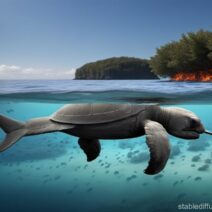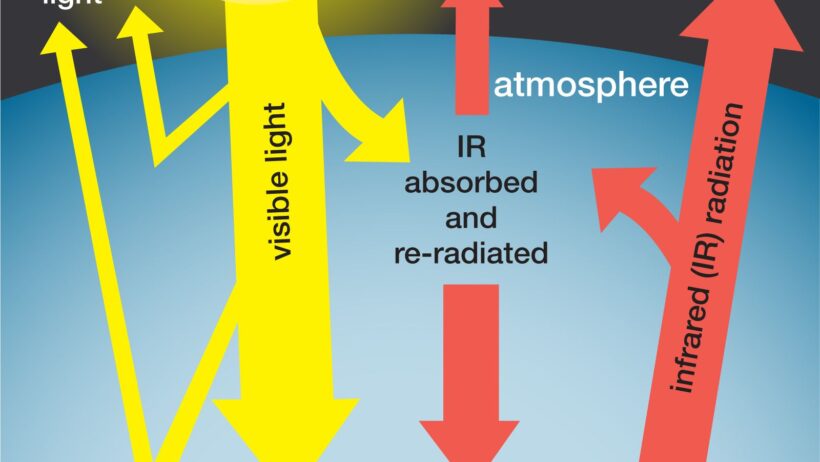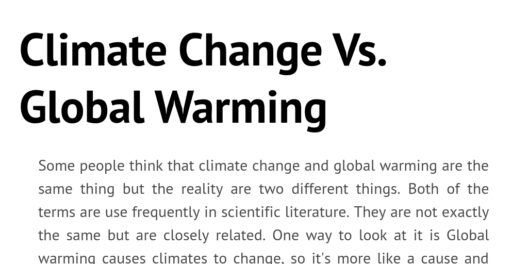Have you ever considered how the intricate tapestry of our climate system is woven together? What would happen if we unravelled a strand or two? Global warming is not merely an abstract phenomenon; it is a culmination of various factors that affect our planet’s delicate balance. By delving into the science behind global warming, we can better equip ourselves to address its challenges and harness its potential for positive change.
At its core, global warming is driven by the greenhouse effect, a process that warms the Earth’s surface. Solar radiation enters our atmosphere, where a portion is absorbed by the Earth’s surface, while the rest is reflected back into space. Greenhouse gases, such as carbon dioxide (CO₂) and methane (CH₄), trap some of this outgoing energy, preventing it from escaping. This natural insulation keeps our planet habitable. However, anthropogenic emissions—resulting from industrial activities, deforestation, and agricultural practices—have exacerbated this effect, leading to a rise in global temperatures.
The fundamental question arises: how can we utilize scientific understanding to mitigate the effects of global warming? Knowledge is power, and in the case of climate change, it is imperative. By elucidating the complexities of climate science, we empower individuals, communities, and policymakers to make informed decisions. Education is the cornerstone of effective environmental action, helping people grasp the intricacies of their impact on the planet.
When we examine the phenomena associated with global warming, we find a wide array of consequences. Among them are extreme weather events, rising sea levels, and altered ecosystems. For instance, melting polar ice caps and glaciers contribute to rising oceans, threatening coastal communities worldwide. Moreover, increased temperatures disrupt traditional weather patterns, resulting in hurricanes of unprecedented ferocity, droughts that devastate agriculture, and floods that displace millions. Such radical changes pose profound challenges for biodiversity, impacting species adaptation and survival.
However, understanding the science behind these trends also reveals opportunities for renewal and resilience. Innovations in renewable energy—such as solar, wind, and hydroelectric power—employ the principles of physics and engineering to harness natural resources. Transitioning from fossil fuels to cleaner energy sources is paramount, not just for curtailing carbon emissions but also for fostering energy independence and economic growth. The sun and wind, abundant and sustainable, hold the key to a potential energy revolution.
Advancements in technology provide another window of opportunity. For instance, carbon capture and storage (CCS) technologies have emerged as a viable method to sequester CO₂ emissions from the atmosphere. By trapping and storing atmospheric carbon, CCS mitigates climate change one ton at a time. Moreover, scientific research into geoengineering—modifying the Earth’s climate system through deliberate interventions—may offer solutions to counteract the negative impacts of global warming. However, these approaches must be carefully considered to avoid unforeseen consequences.
The importance of preserving and restoring ecosystems cannot be overlooked. Forests, wetlands, and oceans act as crucial carbon sinks, absorbing CO₂ from the atmosphere. Reforestation and afforestation initiatives lend restoration to degraded landscapes while simultaneously contributing to biodiversity and carbon storage. By advocating for the protection of these vital ecosystems, we can create synergistic benefits for both the environment and humanity.
Adapting to climate change is another imperative that can derive from scientific understanding. Communities can harness data on climate patterns to better prepare for extreme weather events. For example, infrastructure can be designed to withstand flooding, while agricultural practices can be adjusted to accommodate shifting climatic conditions. The utilization of climate smart practices enhances food security, preserves livelihoods, and bolsters community resilience.
Furthermore, scientific insights amplify the importance of public policy and international agreements. The Paris Agreement exemplifies a global commitment to limit temperature rise and curb greenhouse emissions. Such frameworks necessitate collaboration among nations, economic sectors, and local governments, demonstrating that climate change transcends borders. Through collective action and accountability, resilience can be fortified.
Yet, it is essential to acknowledge the psychological barriers that may hinder action. Often, the enormity of climate change fosters a sense of helplessness among individuals. However, interweaving climate science narratives into public discourse transforms fear into agency. Encouraging grassroots movements and individual contributions, no matter how small, demonstrates that collective efforts culminate in significant change. Each eco-friendly choice, whether it be reducing energy consumption or advocating for sustainable practices, sends ripples through societies.
Effective communication is vital in this journey towards empowerment. By translating complex research findings into accessible language, communities can engage in informed dialogues. Engaging storytelling captivates audiences and illustrates the human aspects of climate action—beyond the data lies the narrative of lives affected and futures at stake.
Ultimately, the understanding of global warming and its intricacies is not a mere academic exercise; it is a powerful tool for transformation. It encourages a holistic view of our relationship with the Earth—one that is balanced, reciprocal, and respectful. By rejecting apathy and embracing informed decision-making, we embark on a path that promotes sustainable progress for present and future generations. In a world also plagued by uncertainty, the science behind global warming empowers us to confront the challenges ahead, creating a more resilient and sustainable future for all.





